Some of the world’s largest orthopedic implant manufacturers, including Stryker, Johnson & Johnson, Smith & Nephew, and Zimmer Biomet, use 3D printing to make medical implants for knees, hips, spine, ankles, and more. In fact, it’s estimated that hundreds of thousands of patients worldwide are walking around on 3D printed knees and hips. Many may not even know that their implants are 3D printed.
The orthopedic implant sector is one of the brightest success stories of industrial 3D printing, or additive manufacturing (AM). Implant manufacturers have found that the technology offers distinct advantages over traditional manufacturing, and AM promises even more advantages as it continues to mature.

Demand for 3D Printed Implants
Implants are a booming business. Every year, over a million Americans need knee replacement surgery, and that number is projected to jump up to 3.5 million by 2030.
Not only is the demand driven by an aging population and rising rates of obesity, which wears out joints faster, but patients are demanding more from their implants. They want to continue sports, strenuous exercise, and live with implants longer than the typical 20 years. So implants are changing.
Additive manufacturing is enabling patient-specific customized implants, which leads to better overall outcomes, and personalized medical instruments and tools to make those surgeries faster and easier. Doctors are also 3D printing patient-specific models for practicing surgeries and teaching students and patients more about the procedure. But in this article, our focus is on the 3D printed implant itself and how only 3D printing enables the complex geometric structure that has been shown to enable bone grow into the implant creating more stability and longer life for the implant.
3D Printed Bone In-Growth Technology
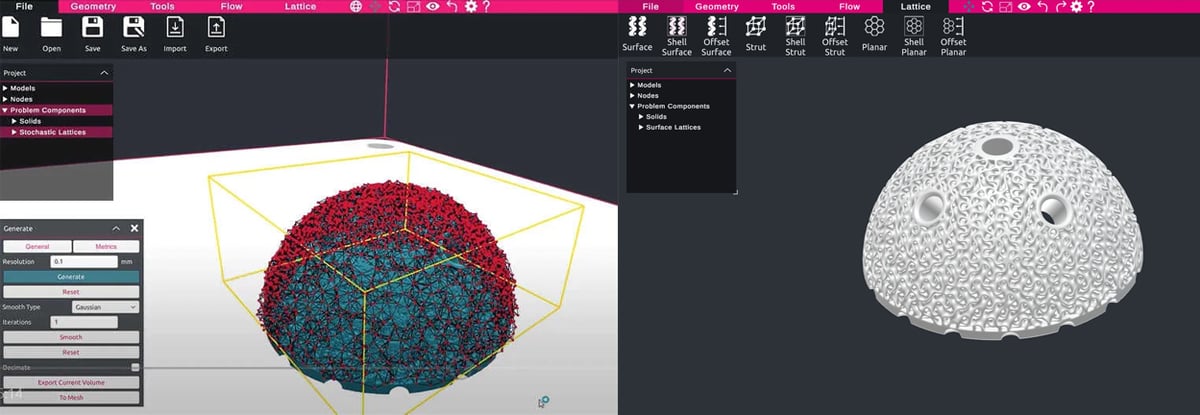
The medical term for bone growing into the implant is osseointegration. Like a sponge that soaks up water, a porous metal surface structure or scaffold on a spinal implant, for example, creates an environment where bone grows into the pores. This bony ingrowth eliminates the need for the cement that’s typically used to secure the bone to the metal implant in the case of knee implants, for example. Excess bone cement can come loose over time and not only leave debris floating in the joint but also speed up the erosion of the implants.
But it’s not just eliminating cement. Porous implants that enable the bond between the bone and the implant actually create stronger bone around the implant that reduces the chances of implant complications.
To understand the importance of osseointegration more, we have to first understand Wolff’s Law, which was discovered by Julis Wolff, a 19th-century anatomist. He discovered that bone responds to the forces that are applied to it and that bone will start to degrade and become less dense over time if it is not exposed to force. What does this have to do with medical implants?
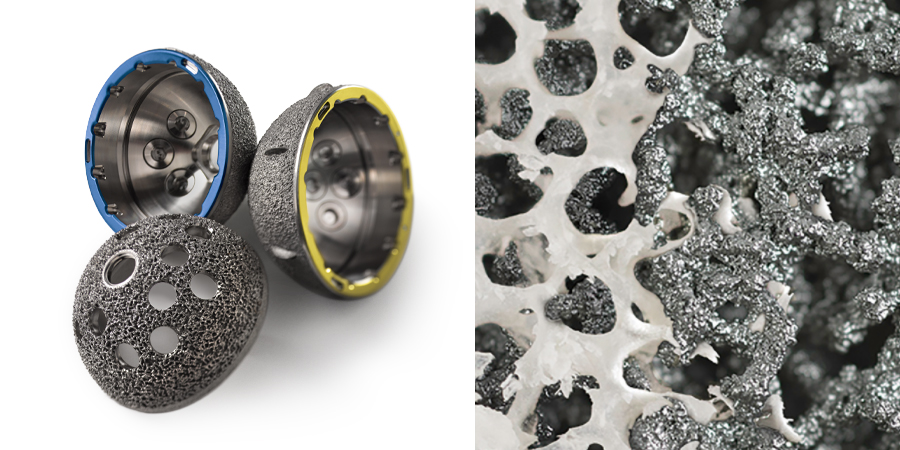
Because a titanium alloy implant is about 3 to 4 times stiffer than bone, it will take the load off the surrounding bone, which will actually weaken that bone. Taking too much pressure off the bone can cause a loss of bone mass. When a patient loses bone around the implant, it can come loose and can break.
Implant engineers can tailor the stiffness and pliability of the medical implant down to something that’s more closely aligned to the stiffness of bone by adjusting the size and shape of each cell in the lattice structure.
Research has found that the porous structure of 3D printed titanium is comparable to skeletal bones, while not being better than anatomical bone overall. The rough texture of the lattice structure in 3D printed implants not only aid in promoting osseointegration, but also allow nutrients to flow around the structure of the lattice, and facilitate soft tissue and bone regrowth.
A recent study in the journal Bone & Joint Research found that 3D printed “titanium lattice implants maintained the natural mechanical loading in the proximal tibia after [a partial or total knee replacement], but conventional solid implants did not.”
These surface lattice structures are only possible with 3D printing. Let’s take a closer look at these structures and how they’re made.
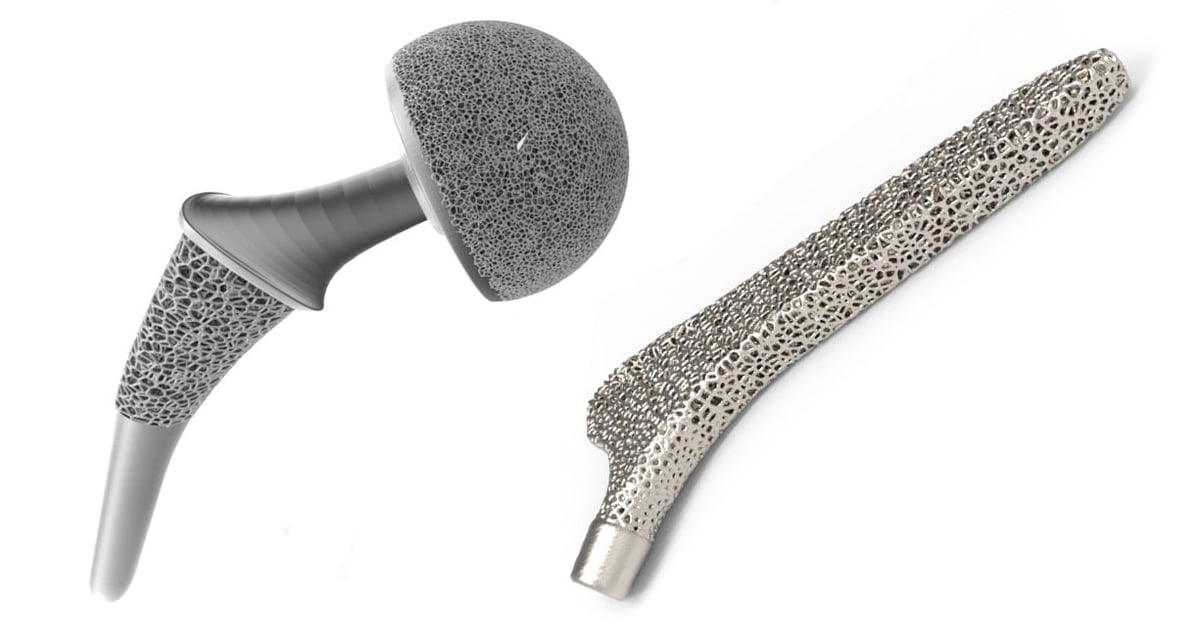
Like a sponge, the lattice-like structure is not perfectly uniform. The types of lumpy structures that we commonly use to create this bone structure are called trabecular lattices or stochastic lattices. These lattices mimic the bone type called trabecular bone and at a basic level are essentially randomized foam.
Specialized computer-aided design (CAD) software enables implant engineers to apply this type of surface structure to metal implants. For example, with the stochastic lattice feature of the Gen3D’s Sulis Lattice module, you can control the density of a stochastic lattice and tailor the properties to specific medical implant applications.
Implants can then be engineered to meet the expected load-bearing conditions of the individual patient and tested in simulation software.
Who Makes 3D Printed Implants
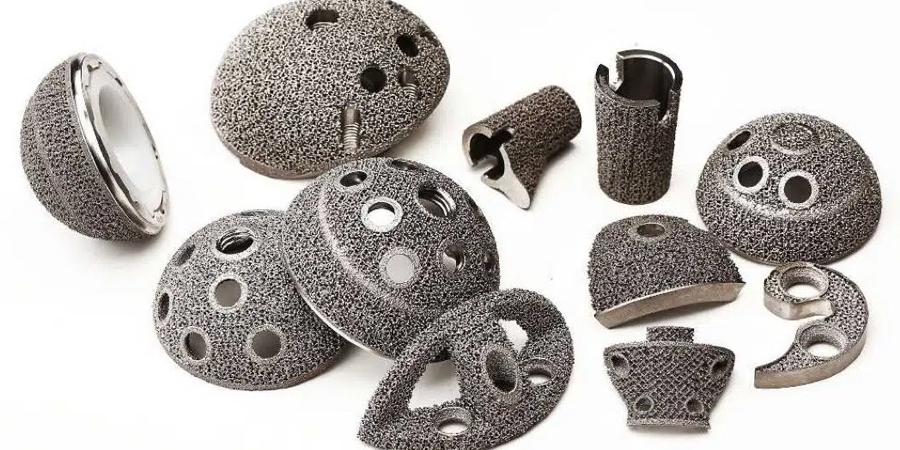
As noted above, Stryker, Johnson & Johnson, Smith & Nephew, and Zimmer Biomet are among the giant global implant manufacturers that have turned to additive manufacturing for many of their products. Add to those, Medtronic, and that makes five of the ten largest orthopedic manufacturers in the world.
Spinal implants are among those most commonly 3D printed. NuVasive, SeaSpine, and Orthofix Medical all launched 3D printed porous titanium implants for anterior lumbar interbody fusion (PLIF) in 2021. Tsunami Medical based in Italy has launched nine 3D printed titanium spinal-fusion implants since the beginning of 2021.
Innovasis, based in Utah, just received FDA 510(k) clearance for its 3D printed Stand-Alone ALIF System with an HAnano Surface modification, which is a type rough coating over the 3D printed scaffold.
Ohio-based Tangible Solutions, which specializes in engineering and production of 3D printed titanium implants for the orthopedic, spine and trauma markets, was recently acquired by Marle Group, a global medical device contract manufacturer with eight global production facilities. Last year, Marle Group also acquired 3D Medlab, a French provider of additively manufactured medical components.
LimaCorporate, a global provider of 3D printed personalized orthopedic components joined forces with the Hospital for Special Surgery (HSS) in New York City to open the “3D Design and Printing Center for Complex Joint Reconstruction Surgery.” The FDA-regulated commercial facility is the first of its kind, established to create faster access to patient-specific implants for highly complex orthopedic conditions.
Despite the fact that the major players have embraced 3D printing, there’s still room for start-ups. One from Italy called Monogram Orthopedics says it plans to commercialize the first patient-specific 3D printed implant solution to address the primary shortcomings of their generic counterparts.
How Are 3D Implants Made
Orthopedic implants are mostly metal but sometimes ceramic (and occasionally a polymer called PEEK) and 3D printed using laser powder bed fusion technology, either selective laser melting or electron beam melting, and sometimes directed energy deposition. Titanium alloys are the most common material choice along with cobalt-chromium alloys and stainless steel due to their excellent mechanical strength, no cytotoxicity, and good corrosion resistance.
Additively Manufactured Implants of the Future

Orthopedic implant manufacturers haven’t adopted 3D printing just for its ability to create complex surface structures, although that would be reason enough. There are more benefits in testing today that we’ll see in the years to come, such as:
- Degradable implants. We will see more degradable implants and new biomaterials for use in orthopedic implants. Biodegradable implants mean that over time as the patient’s bone integrates with the implant, the implant degrades and is replaced by the human bone structure.
- Personalized implants. Currently, we customize implants for patient size but in the near future we will be able to customize for the patients’ age, bone density requirements, and nutrient growth requirements. We will be able to take a patient-specific scan and test data then integrate it into our CAD software to design bespoke 3D printed implants for every patient.
Currently, traditional manufacturing methods, such as casting, forging, and machining are the most common for parts that do not require the unique structures or geometries that can only be created with 3D printing, but that could change with the move to implant customization.
New research out in Feb. 2022, points to the field of orthopedic “smart implants” that may play an important role in the diagnosis and treatment of diseases. “With the advancement of 3D printing technology and materials, the manufacture of multilayer and multimaterial electronic devices can be realized,” the report notes. So far, intelligent orthopedic implants have been used for bone healing assessment, knee joint force analysis, spinal fusion monitoring, and hip prosthesis loosening monitoring.
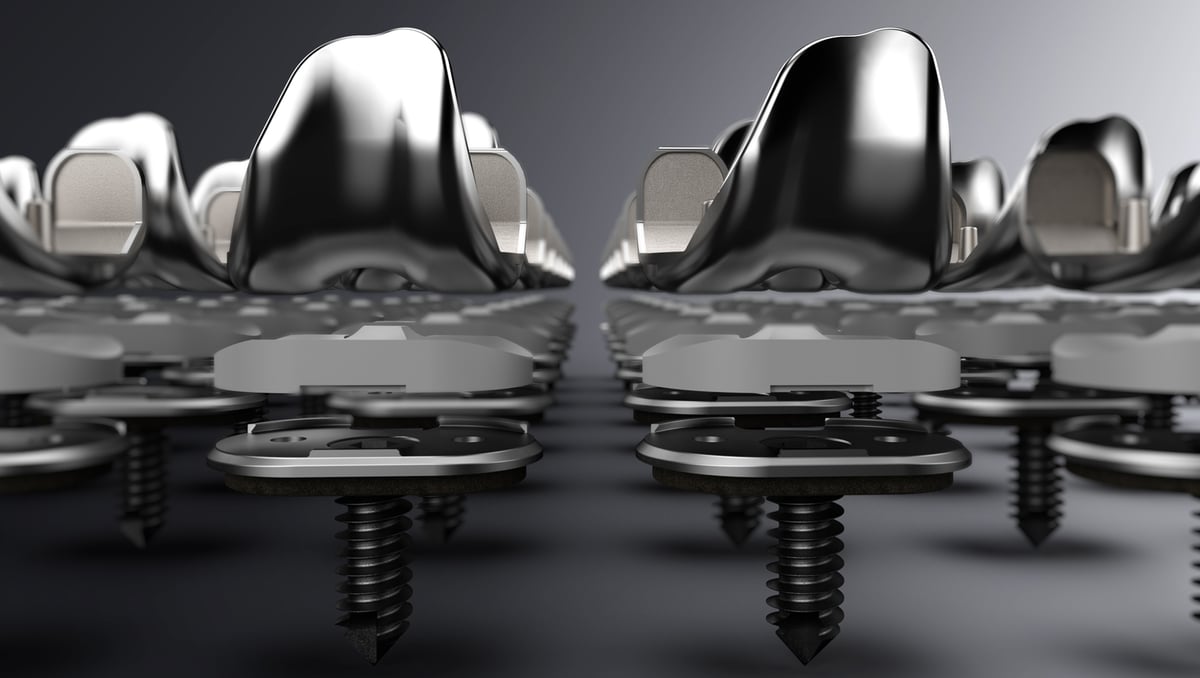
Dr. Steven Goguelin is a research & development engineer at Gen3D.
Dr. Steven Goguelin obtained a degree in mechanical engineering, specializing in design from the University of Bath in 2015. He continued his studies completing a Ph.D. in design for additive manufacturing, focusing on the role of computers in the additive manufacturing workflow. In 2019, he joined Gen3D Ltd. where he adopted a design and applications role helping customers to maximize the potential of additive manufacturing in their applications.
License: The text of "3D Printing in Orthopedics: Better Knee, Hip & Spine Implants" by All3DP Pro is licensed under a Creative Commons Attribution 4.0 International License.

